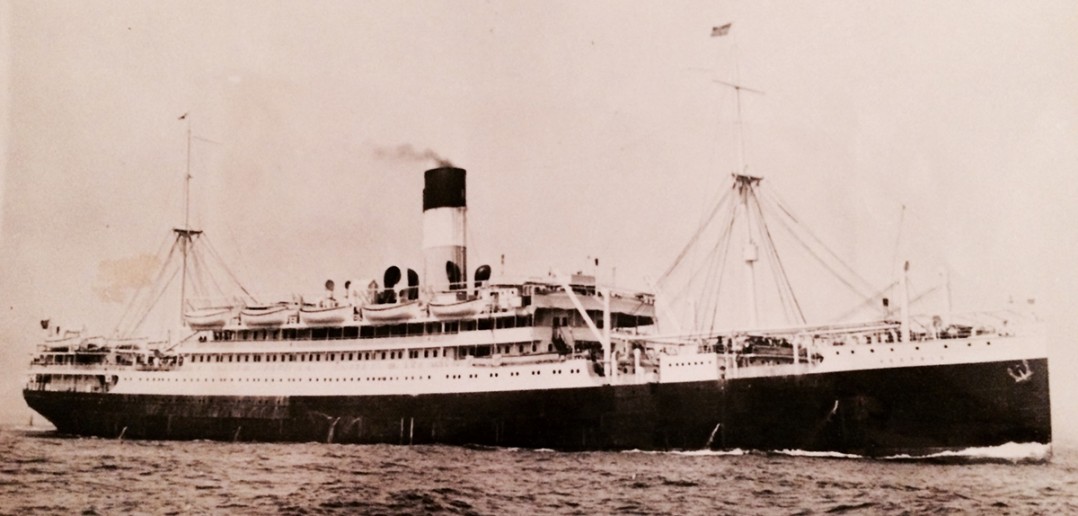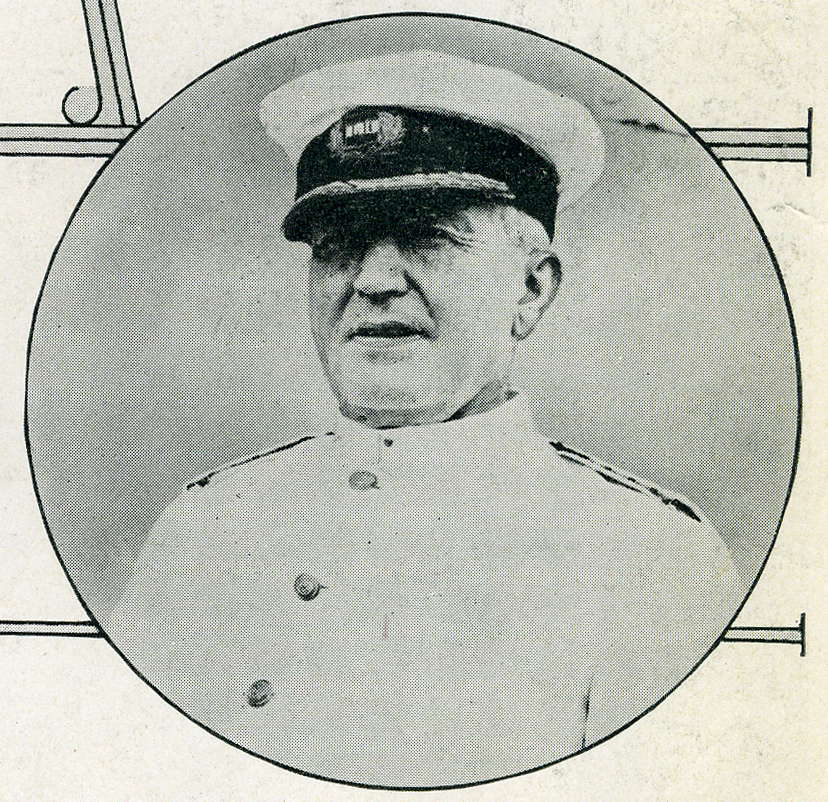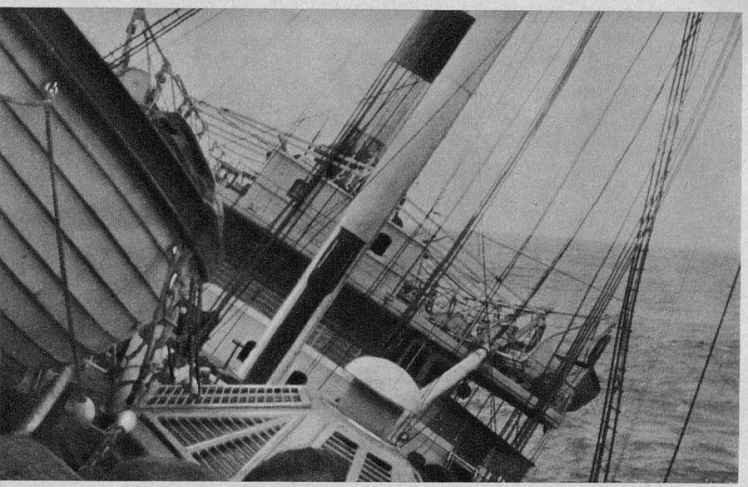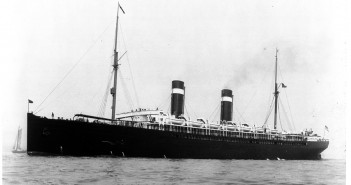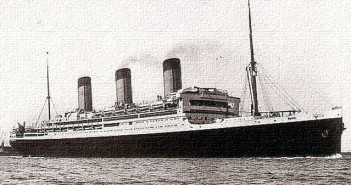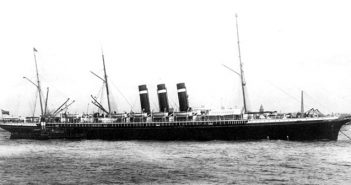Vestris was a 1912 steamship owned by Lamport & Holt Line and used in its New York to River Plate service. On 12 November 1928, she began listing about 200 miles off Hampton Roads, Virginia, was abandoned, and sank, resulting in the deaths of more than 100 people.
Titanic enthusiasts wondering if another shipwreck has anything in common with the disaster of April 1912 finally have their answer: the sinking of Vestris. Titanic’s foundering and that of Vestris 16 years later share some very hair-raising coincidences.
The loss of Vestris in November 1928 off the Virginia Capes was an even bigger news story than the Titanic sinking had been. The New York Times called it “The grimmest epic of the seas since the Lusitania was sunk.” In his book, Only Yesterday: An Informal History of the 1920s, the journalist Frederick Lewis Allen reported that the event “was so hysterically reported that one might have imagined it to be the greatest marine disaster in history.” Of course, it wasn’t. Not to diminish the loss of life, but Vestris’ death toll of 115 doesn’t come close to the number of people who were doomed to frigid, watery graves when the Titanic went down. However, the numerous similarities between the two ships are worth exploring. Here are the top 15 undisputable similarities between Titanic and her doomed little cousin:
- BOTH ships were one of three sisters. Titanic was the second-built of three Olympic-Class steamers. Officials of Liverpool’s White Star Line hoped the bigger and better Olympic, Titanic and ultimately the Britannic would help them increase their market share on the competitive Southampton-to-New York run. The Lamport and Holt Line, also of Liverpool, had similar hopes for its V-Class liners for trade between New York and South America. The Vestris was built after her sisters Vandyck and Vauban.
- BOTH ships were being built in Belfast – At the same time. While the much-heralded Titanic was being constructed at Harland and Wolff, Vestris was quietly being built at the shipyard next door. Workman-Clark and Co. was known to locals as “the Wee Yard,” but the company actually produced hundreds of vessels for the biggest shipping lines of the day before closing in 1935.
- BOTH ships’ safety features were famously featured in Shipbuilder magazine. Titanic’s watertight compartments were profiled in the summer, 1911 edition. The Vestris’s state-of-the-art Martin Davits were covered by the magazine a year later. When the chips were down, both systems’ performance left much to be desired.
- BOTH ships made their maiden voyages in 1912. Vestris left Liverpool for New York City by way of South America in September of 1912, while Titanic, en route from Southampton to New York, tragically hit an iceberg and foundered in April of that year.
- BOTH ships were registered in Liverpool. Both vessels called the city home. The Titanic never visited the port, and at the time of her sinking, the Vestris hadn’t been back for six years.
- A “reshuffle” in Vestris and Titanic officers led to confusion. While the Titanic was preparing to depart Southampton, Olympic Chief Officer Henry Wilde was added to the crew, bumping William Murdoch down to first officer, and Charles Lightoller down to second. When the erstwhile second officer, David Blair, was off the ship, he took the key to the crow’s nest telephone with him and failed to pass along where he had stowed the binoculars.
Before Vestris left her Hoboken pier, First Officer Frank Johnson was elevated to chief when his predecessor was transferred off. Johnson became overwhelmed with his new duties and failed to make up the crew lifeboat assignment list. The personnel moves on Titanic ultimately reduced the distance lookouts could see, while the absence of a lifeboat list on the Vestris resulted in scores of crew members milling about the tilted decks with no idea which boat to get into.
- BOTH ships were commanded by the shipping line’s senior captain, who died in the sinking. Like Edward J. Smith of Titanic, William J. Carey was popular with passengers and well-respected by his crews. However, as Lamport and Holt’s senior captain, Carey formally held the title Commodore. If, in 1912, the White Star Line officially recognized the title, Smith would have been it.
- BOTH ships sailed on the 10th of the month. Titanic: April 1912. Vestris: November 1928.
- BOTH ships struck on a Sunday night and sank on Monday. The Vestris, overloaded, leaky and dead-in-the-water riding out a hurricane, was hit by two monster waves that threw passengers across the dining room. The fact Titanic struck an iceberg is a near universally-known fact. Both vessels filled with water as the hours passed. Titanic only held out about three hours, while the Vestris took hours more to founder. The water’s temperature was a different story. Vestris passengers thrown into the Gulf Stream water were sustained by its nearly 80 degree temperature. Titanic swimmers didn’t have that luxury.
- BOTH ships’ captains ordered “Women and children first.” On board Titanic, the order was given by a captain who knew there weren’t enough boats for everyone on board. Smith followed the “tradition of the sea.” So did Carey, butthe situation onboard Vestris was quite different—there were more than enough boats for all. Captain Carey’s order to boat assignments broke up families needlessly and actually led to more deaths. Carey ignored most of the available boats and loaded all women and children into three ill-fated boats. Of the 36 female passengers on board the Vestris, 28 were lost. All 13 children were killed.
- A prominent army major with close ties to Washington, D.C. was lost in BOTH disasters. Major Archibald Butt died on board Titanic. He had served as military aide to Presidents Theodore Roosevelt and William Howard Taft. Major Yoshio Inouye was taking Vestris to South America to assume his post as the Japanese army’s military attaché at the embassy in Buenos Aires, Argentina. His previous posting was Washington, D.C. Like Butt, Inouye counted many U.S. army officers among his circle of friends.
- BOTH ships’ No. 14 lifeboat rigged up its sail. Fifth Officer Harold Lowe of the Titanic and Vestris Quartermaster Lionel Licorish each found themselves in command of their respective vessels’ lifeboat No. 14. In displays of extraordinary courage and seamanship, the men were also the most active rescuers after the ships went down. By the time Lowe returned, only a handful of unfortunates were fished out of the water; Licorish saved about 20.
- Survivors were brought to New York City. In both cases,Men and women were greeted by a media frenzy when they stepped off the rescue vessels. Crew members were lodged at the Seamen’s Church Institute where the lobby was transformed into a tailor’s shop. New navy blue suits, shoes, shirts, neckties and leather suitcases were issued to each man. Capt. Arthur Rostron of the rescue ship Carpathia was honored by Titanic survivor Margaret Brown, while Vestris survivor Clara Ball honored Capt. Schuyler Cumings of the rescue ship American Shipper. The hero Rostron went on to become commodore of the Cunard Line while Cumings was eventually elevated to commodore of the United States Lines.
- Curiously similar fates of the three sisters. Vestris and Titanic each sank with a load of passengers. Their sister ships Vandyck and Britannic were lost due to enemy action during the First World War. The Vauban and Olympic served their companies well until they were retired.
And perhaps the most chilling similarity of all…
15. A lack of radio communication prevented a nearby Boston-bound freighter from arriving in time to save lives. The wireless operator aboard the Boston-bound Leyland Liner Californian switched off his set and went to bed. Many believe that Californian was close enough to havebeen on-scene to rescue passengers and crew had the ship heard Titanic’s pleas for help. In the Vestris’s case, the tramp steamer Montoso was bound for Boston about 20 miles from where Vestris was foundering, but did not stop. The Montoso lacked a radio.
Vestris and Titanic also share a special bond New York City. In the wake of the 1912 disaster, a collection was taken up to fund the construction of the Wireless Operators Monument at Battery Park. Titanic hero Jack Phillips was the first name to be added. Michael J. O’Loughlin of the Vestris was twenty-fourth. Unfortunately Vestris remains mostly unknown to history while the story of her big cousin from Belfast has reached mythical proportions.
Clint Olivier is an award-winning television journalist and radio host. His first book, Last Dance of the Vestris, is available on Amazon.com (simply click on the Vestris book cover displayed higher up on the right side of this page).

